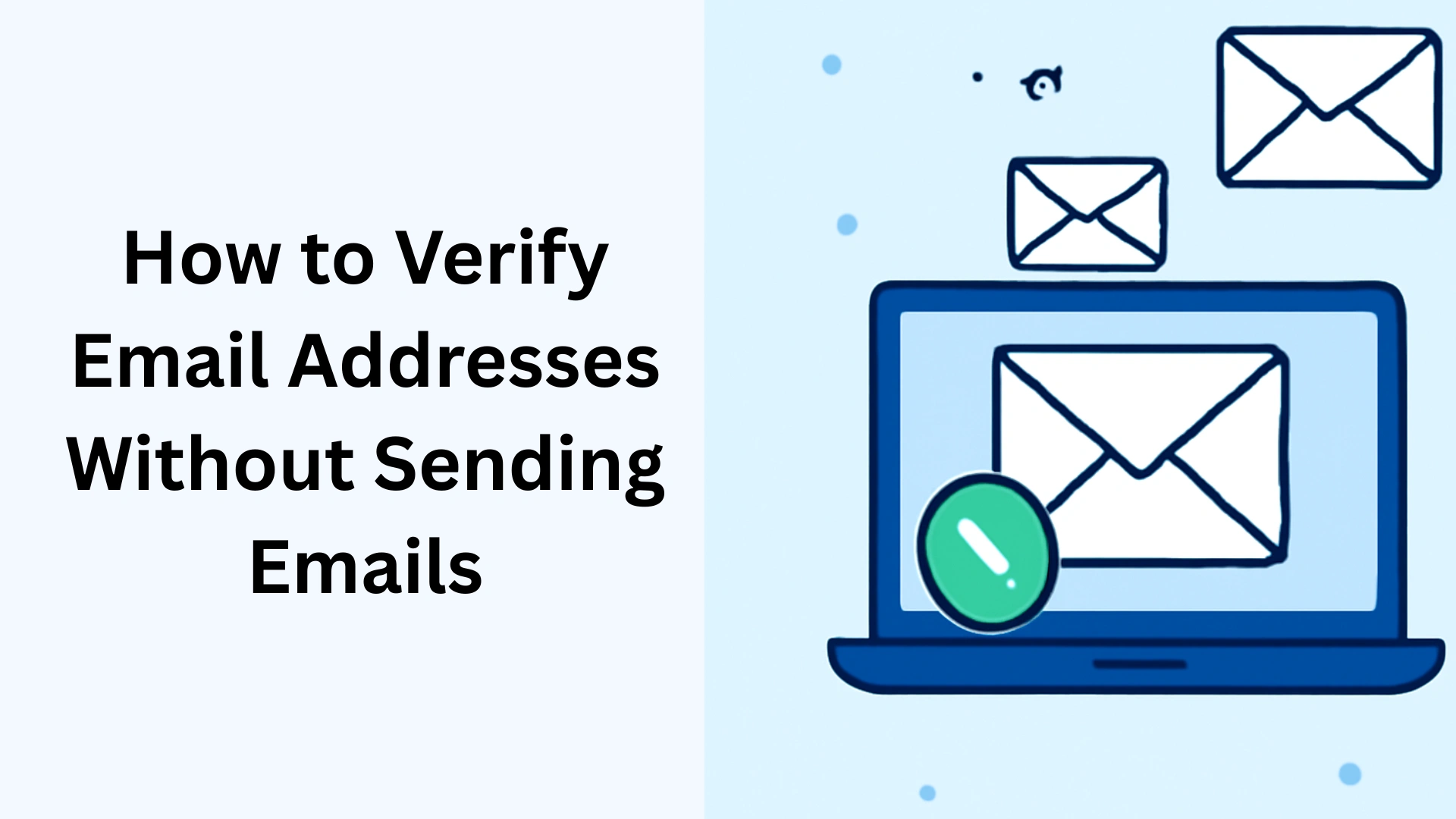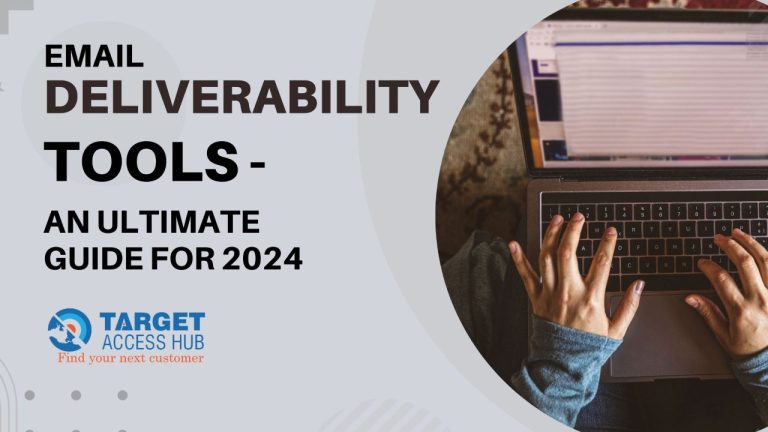How to Verify Email Addresses Without Sending Emails: A Smart Guide for B2B Marketers

With an average return on investment of $42 for every dollar invested, email marketing is still one of the best ways to generate B2B leads. Imagine you have a pipeline full of email addresses that involve your target audience. Some of them frequently open and respond to your emails and others are almost in the conversion stage.
But in some cases, you are sending emails to addresses that no longer exist. Or ones that are incomplete or are no longer in use. In such cases, sending emails to invalid addresses can affect important marketing resources. It can also lower deliverability rates and seriously harm your sender reputation.
The difficulty lies in confirming email addresses without sending them emails. While it may sound basic, it remains an essential ability for contemporary B2B marketers that wish to keep lists clean. In the long run, it will also increase the efficacy of their campaigns.
Why Should You Verify Email Addresses Before Sending Campaigns?
Maintaining a successful email marketing program requires email verification. Internet service providers (ISPs) monitor bounces from emails sent to invalid addresses and use them as indicators to assess your sender reputation. Emails with a high bounce rate may end up in spam folders or, worse, have your site completely blocked.
In addition to deliverability issues, unconfirmed email lists result in distorted analytics and exorbitant marketing expenses. Only 7,000 of the addresses you may believe you are reaching are legitimate, even though you may be contacting 10,000 prospects.
Campaign planning, performance evaluation, and resource allocation are all impacted by this imbalance. Furthermore, a lot of email service providers base their fees on the size of your list, therefore incorrect addresses have a direct effect on your profitability.
It is also impossible to ignore the compliance component. Regulations like GDPR and CAN-SPAM require explicit consent and accurate recipient information. Sending emails to invalid addresses can be seen as poor data management practices. In the long run, it can potentially expose your organization to regulatory scrutiny.
What Are the Different Methods to Verify Emails Without Sending?
You can verify email addresses using a number of technical methods without actually sending emails. The most popular approach uses built-in validation methods or regular expressions to check the syntax of emails. This procedure finds addresses that are clearly distorted, such as those that contain incorrect characters or lack the @ sign.
An additional layer of validation is domain verification. This technique determines if an email address’s domain part matches a legitimate, active domain with the appropriate mail exchange (MX) information. Any address linked to a domain that lacks MX records is invalid since it is unable to receive emails.
By establishing a connection with the recipient’s mail server and mimicking an email send without actually sending a message, SMTP verification goes one step further. This method asks the server if a particular email address is active and able to receive messages. To prevent your IP address from being blacklisted or triggering spam filters, this strategy must be used carefully.
Cross-referencing social media has become a useful additional verification technique. You can explore related social accounts and professional networks to confirm the credibility of an address because many professionals use consistent email habits across platforms.
How Do Email Verification Tools Actually Work?
Expert email verification services integrate several validation methods into simplified systems. After removing blatantly wrong addresses through syntax checking, these tools usually move on to domain verification to make sure the receiving server is operational and configured correctly.
Real-time SMTP checks are carried out by the most advanced systems, which connect to mail servers to confirm individual addresses. They keep track of temporary email services and catch-all servers that accept any emails regardless of their legitimacy.
The most important part is how they find databases of known invalid domains. Even when addresses technically pass conventional verification procedures, this database technique aids in identifying potentially troublesome addresses.
Additionally, a lot of verification solutions use machine learning algorithms that have been trained on enormous email pattern datasets. Based on common traits of transient, phony, or abandoned email accounts, these algorithms are able to recognize suspect addresses. To give each address a confidence score, they look at things like domain age, email pattern consistency, and past bounce rates.
To verify against their internal databases of incorrect addresses, sophisticated platforms interface with major email service providers. This integration helps find email addresses that may have been valid in the past but are no longer active and adds more layers of verification.
Which Email Verification Tools Are Best for B2B Marketers?
Target Access Hub is notable for its distinct methodology, providing real-time verification along with reporting on spam trap detection, abuse email identification, and email quality. Because of its smooth integration with the majority of marketing automation tools, its API is perfect for companies who run a lot of email campaigns.
B2B prospecting benefits greatly from Hunter.io’s superior domain-specific verification. Finding reliable connections within target firms is made easier with their technology, which not only validates current addresses but also recommends possible email patterns for businesses.
Clearout offers robust API capabilities, real-time checking features, and affordable verification. They provide clear pricing and thorough verification reports to their users in time. These reports let marketers know the precise reasons why a given address is marked as unsafe or incorrect.
How Can You Implement Email Verification in Your Marketing Workflow?
For email verification to be effective, integration timing is essential. To stop invalid addresses from ever entering your database, use real-time verification at the point of capture, whether it be through lead magnets, landing pages, or web forms. Cleaning lists after they have been tainted with inaccurate data is less effective than taking this proactive strategy.
Set up routine verification plans for databases that are already in place based on your email frequency and list growth rate. While smaller organizations may check quarterly, high-volume senders should do it weekly. Before launching a significant campaign or importing fresh contact lists from outside sources, always double-check.
Create automatic processes that divide confirmed addresses into groups according to the degree of trust. Medium-confidence addresses may need extra verification procedures or more cautious sending techniques. On the other hand, high-confidence addresses can go straight to your primary marketing sequences.
Establish contingency procedures for addresses that don’t pass verification. Maintain a review procedure that enables you to personally assess borderline cases or offer other contact information for significant prospects because sometimes valid addresses are reported wrongly.
What Are the Best Practices for Maintaining Clean Email Lists?
Some best practices to keep in mind while maintaining updated and clean email lists in the long run include:
For new subscribers, use multiple opt-in procedures to guarantee address legitimacy and sincere interest. By requiring users to validate their email addresses via a verification email, this approach automatically eliminates temporary or incorrect addresses. At the same time, it also guarantees the adherence to privacy laws.
As a measure of address quality, keep a careful eye on engagement metrics. Even if an address passes verification procedures, it may be considered inactive if it continuously displays zero engagement for prolonged durations. Before deleting these connections completely, think about launching re-engagement campaigns.
Ensure that all addresses that have bounced, unsubscribed, or complained are included in suppression lists. To avoid adding faulty addresses again, cross-reference newly added contacts with these lists. To make this process go more quickly, a lot of verification tools can be integrated with your current suppression lists.
Summing Up
Improved deliverability, higher engagement rates, and more precise campaign analytics are all benefits of investing in appropriate email verification. B2B marketers can preserve clean, efficient email lists that produce tangible business outcomes with them.
They also also protect their sender reputation and marketing budget by putting these tactics and resources into practice. For more information on verifying your email addresses, contact an expert like Target Access Hub.






